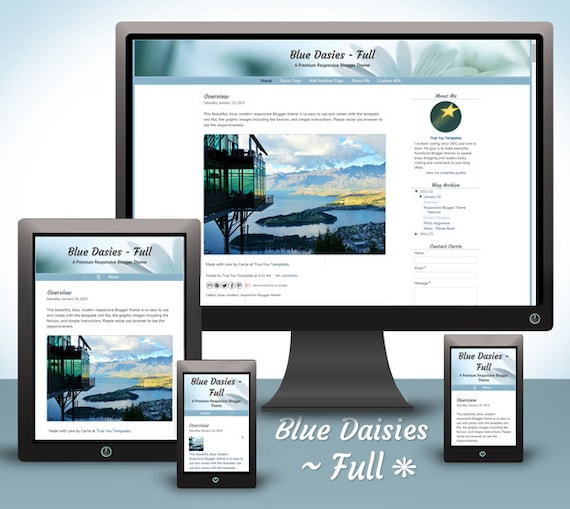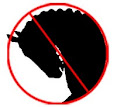 When we first began our foray into horse ownership, bitting was easy. Why? Basically because Shadow and Champ came with their own bridles. While Shadow seemed fine with his (a low port Walking Horse Bit), Champ was pretty difficult to tack up with his grazing bit and had an annoying head tossing issue when you rode him. Of course you know what happened next, don't you? Yep - research mode :o) After reading a ton of stuff, starting with causes for head tossing, I bought a basic hackamore, tried it on Champ, and HOORAY! no more head tossing.
When we first began our foray into horse ownership, bitting was easy. Why? Basically because Shadow and Champ came with their own bridles. While Shadow seemed fine with his (a low port Walking Horse Bit), Champ was pretty difficult to tack up with his grazing bit and had an annoying head tossing issue when you rode him. Of course you know what happened next, don't you? Yep - research mode :o) After reading a ton of stuff, starting with causes for head tossing, I bought a basic hackamore, tried it on Champ, and HOORAY! no more head tossing.Below are pictures of Shadow's bit (which we still use, although I fantasize about getting him a walking horse bit in sweet iron :o) Champ's original grazing bit and the hackamore he now uses. In case you're outside the state of Alabama, our daughter is a HUGE Auburn fan so I remade his hackamore accordingly (hence the orange and blue - I don't really care about football, but his hack turned out pretty good, didn't it?).



With the arrival of our three accidental rescues, Cinnamon, Retta and Max, I realized that I really didn't know a whole lot about bits beyond the basics. Cinnamon and Retta also came with their own bridles, (Max was still a baby) but my ability to identify the bits and name the parts didn't seem to be enough in the way of knowledge (so back into research mode we went :o) Cinnamon had a Pelham which seemed to go well with his hard mouth (Hard meaning completely unresponsive to the bit - see our rodeo tale on Cinnamon's page) but after a very short period of time I wondered if there wasn't a way to work backwards to a more basic (and less harsh) bit. To put it simply: Cinnamon may have been resigned to his bridle and the harsher bit, but it bothered me.
At first, we tried several different bits from the store, but as you can imagine that got pretty expensive in a hurry. Then we tried different bits out of a huge box of used tack we had bought and (through trial and error between the two) here are some things we discovered:
 This sweet iron grazing bit turned out to be a good match for Katie, (she no longer lives here, but she's in our photo album). She did pretty well in a hackamore too. The horses seemed to like the "flavor" of the sweet iron, so that has become my first choice. For whatever reason, a plain snaffle bit caused Katie to drop her head all the way down until her nose was almost touching the ground and she would refuse to lift it. She would do anything you asked her to as far as speed and direction, but it was like riding a headless horse (funny, but really weird). Allrighty then, nix on the snaffle for Katie...
This sweet iron grazing bit turned out to be a good match for Katie, (she no longer lives here, but she's in our photo album). She did pretty well in a hackamore too. The horses seemed to like the "flavor" of the sweet iron, so that has become my first choice. For whatever reason, a plain snaffle bit caused Katie to drop her head all the way down until her nose was almost touching the ground and she would refuse to lift it. She would do anything you asked her to as far as speed and direction, but it was like riding a headless horse (funny, but really weird). Allrighty then, nix on the snaffle for Katie...The pictures below were one of those "seemed like a good idea at the time" things. This lightweight hard rubber D-Ring we bought to try seemed like it would be great. Look what happened after only a couple of uses - good thing we noticed the crack before we used it again because
 ouch!
ouch!

Here's one that we got for Retta at an auction ~ unfortunately, it turned out to be a LOT different than it looked from our seats (another lesson learned - oops). The mouthpiece on this one turned out to be square, not round, and was a much harsher bit than it was touted in spite of the copper roller in the middle and the shanks that curve back toward the horse :oP
Another thing to watch for? Check where the bit connects to the cheek pieces; are they flush
 or is the mouthpiece larger? The El-Cheapo cheesy bit on the right that came in that giant box of tack may be around the outside of the r
or is the mouthpiece larger? The El-Cheapo cheesy bit on the right that came in that giant box of tack may be around the outside of the r ings, but it can still pack a pinch (this would be where bit guards come in).
ings, but it can still pack a pinch (this would be where bit guards come in).Bits that are flush (picture below) can have wiggle room in the wrong direction (up and down) and cause serious misery to your mount - sadly, I learned this from a very nice but rather oblivious owner that had "never noticed" a problem until I asked about the blood at the corners of his horse's mouth after a ride (in their defense, it was a dark-colored horse and the problem was rectified immediately with bit guards, but I had to wonder how long it had been that way you know?).

I found this great "no pinch" bit at Jeffers (pictured on right). It's a sweet iron snaffle I bought for training Max (he likes it). Unfortunately, it's also a bit (sorry, couldn't resist :o) expensive, so purchasing a second one for Cinnamon is on my wish list for now.
I began a foray into the baffling world of bits, but there are SO many different kinds and so much information, I thought my brain would explode from overload before I actually figured anything out. It wasn't until I discovered this marvelous rating system (which helped me to bypass other people's opinions and descriptions written in catalogs and figure it out for myself) that I started to more clearly understand the whole bitting process. I believe that it was Dr. Deb Bennett (she's on our Horse Heroes page) that developed this formula; but I'm not 100% sure (so if you know who did, PLEASE let me know for sure so I can post proper credit!) The page I found it on is no longer available, so I'm putting the actual formula for the rating system on our Handydandy Hints Page; because if this isn't handy information, I don't know what is :o)
 I'd have to say that although most of our horses ended up with different/better bits, Cinnamon probably benefited the most from all of my studiousness and experimenting with this topic :o) On the right is the Pelham he was ridden with initially. In all honesty, it's a debatable issue as to whether or not a harsher bit will add to your whoa power. Why do I say this? Mostly because the fairly harsh bit on the right was the one Cinnamon was wearing when we had our little impromptu rodeo demonstration...
I'd have to say that although most of our horses ended up with different/better bits, Cinnamon probably benefited the most from all of my studiousness and experimenting with this topic :o) On the right is the Pelham he was ridden with initially. In all honesty, it's a debatable issue as to whether or not a harsher bit will add to your whoa power. Why do I say this? Mostly because the fairly harsh bit on the right was the one Cinnamon was wearing when we had our little impromptu rodeo demonstration...
One of my Cinnamon experiments was with a Kimberwick bit, pictured left. It allowed for a flexibility in the amount of leverage used by changing the slot used for the reins. Initially, I went with a set of double reins, as it allowed me to ride with the top only but gave me an "emergency brake" of sorts if I needed it (and we did, a time or two :o) He seemed to like it better than the Pelham, but I wanted to see if we could go lighter.
I tried him with a hackamore, but interestingly enough he hated it - how did we know? Because he developed the same head tossing issue Champ had which completely disappeared when we lost the hack. The grazing bit was a bust, as was the full cheek snaffle. A copper mouth Argentine snaffle wasn't too bad, but we weren't quite "there"...

So where did we end up? After tons of experimenting and lots of time (well spent, of course!) Cinnamon really went for this smooth sweet iron snaffle, pictured on the right. Surprisingly, it doesn't pinch even though it looks like it would :o)
Okay, so what did I learn from all this stuff? It's about the comfort to your horse certainly, but also about retraining the brain (on both sides :o) There are an alarming number of people that believe "a bigger/badder bit = a better behaved boy", but in reality it's not the strength of the bit but more in the "minding" of the horse over the matter of his "treining" (just ask Cinnamon, he'll tell you :o)
Cherry Hill has a blurb about increasing bit severity here.

























